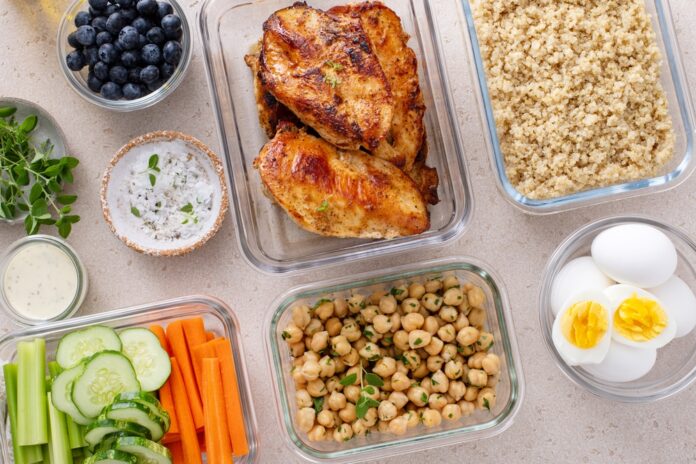As we age, maintaining muscle mass becomes increasingly important for overall health, mobility, and independence. Muscle loss, known as sarcopenia, is a common challenge for seniors, leading to reduced strength and a higher risk of falls. Incorporating high-protein foods into daily meals is a crucial strategy to combat this issue.
Understanding the Importance of Protein for Seniors
Protein plays a vital role in repairing muscle tissues, supporting bone health, and enhancing metabolic functions. For older adults, consuming adequate protein helps:
- Prevent Sarcopenia: Regular intake of protein slows down muscle degeneration, maintaining strength and balance.
- Improve Metabolic Health: Higher muscle mass boosts metabolism, aiding in better weight management and insulin sensitivity.
- Enhance Recovery: Protein supports faster healing from injuries or surgeries by promoting tissue repair.
Research suggests that seniors may require more protein than younger adults to achieve these benefits. While the Recommended Dietary Allowance (RDA) is about 0.8 grams per kilogram of body weight, older individuals might need to increase this amount to preserve muscle mass effectively.
Top High-Protein Foods for Seniors
Lean Meats
Lean meats like chicken, turkey, and lean cuts of beef or pork are excellent protein sources.
- Chicken and Turkey: Skinless poultry provides essential amino acids necessary for muscle repair and growth.
- Lean Beef and Pork: These meats offer not only protein but also vital nutrients like iron and B vitamins.
Including lean meats in meals can be as simple as grilling chicken breasts for a salad or roasting turkey slices for sandwiches.
Fish Rich in Omega-3 Fatty Acids
Fish such as salmon, tuna, and mackerel are not only high in protein but also rich in omega-3 fatty acids.
- Salmon and Tuna: These fatty fish support muscle health and offer anti-inflammatory benefits.
- Mackerel: Another great option, mackerel provides heart-healthy fats and can be included in various recipes.
Incorporating fish into the diet at least twice a week can enhance protein intake while providing additional health benefits.
Dairy Products
Dairy foods are convenient and versatile protein sources.
- Eggs: Offering all nine essential amino acids, eggs are a powerhouse of nutrition and can be prepared in numerous ways.
- Greek Yogurt and Cottage Cheese: These are high in protein and can be paired with fruits or used in smoothies.
- Milk: Milk is not only rich in protein but also provides calcium and vitamin D for bone health.
For those with lactose intolerance, lactose-free options or fortified plant-based milks can be alternatives.
Legumes and Beans
Plant-based proteins like lentils, chickpeas, and various beans are excellent for diversifying protein sources.
- Lentils and Chickpeas: High in protein and fiber, they support digestive health while aiding muscle maintenance.
- Black Beans and Kidney Beans: These beans are nutrient-dense and can be included in soups, stews, or salads.
Legumes are also beneficial for heart health and can be a staple in vegetarian diets.
Nuts and Seeds
Nuts and seeds provide healthy fats alongside protein.
- Almonds and Walnuts: A handful can be a quick snack to boost protein intake.
- Chia Seeds and Flaxseeds: These can be added to yogurts or smoothies for an extra protein punch.
Nut butters like peanut butter can be spread on whole-grain toast for a protein-rich snack.
Tips to Increase Protein Intake
Spread Protein Intake Throughout the Day
Consuming protein in smaller amounts across all meals and snacks ensures better absorption and utilization.
- Start the day with a protein-rich breakfast like scrambled eggs or a smoothie with Greek yogurt.
- Include protein in snacks, such as a boiled egg or a handful of nuts.
Address Appetite Changes and Chewing Difficulties
For seniors facing decreased appetite or dental issues:
- Soft Protein Sources: Opt for foods like scrambled eggs, yogurt, or protein shakes.
- Nutrient-Dense Smoothies: Blend fruits with protein powder or nut butter for an easy-to-consume option.
Make Meals Flavorful and Appealing
Enhance the taste of high-protein foods to encourage regular consumption.
- Use herbs, spices, and marinades to add flavor without extra sodium.
- Incorporate colorful vegetables to make meals visually appealing.
Overcoming Common Challenges
Managing Dietary Restrictions
For those with specific dietary needs:
- Plant-Based Proteins: Tofu and tempeh are excellent for vegetarians or those reducing meat intake.
- Low-Lactose Options: Lactose-free dairy products or fortified plant milks ensure adequate protein without discomfort.
Safety and Convenience
- Easy-to-Prepare Foods: Keep canned tuna, pre-cooked beans, and ready-to-eat legumes on hand.
- Meal Planning: Prepare meals in advance or use services that cater to dietary needs for seniors.
Conclusion
Maintaining muscle mass through high-protein foods is essential for seniors to lead active, independent lives. By incorporating a variety of protein sources and addressing individual challenges, older adults can improve their overall health and well-being.
For personalized nutrition advice, consider consulting a healthcare provider or a registered dietitian specializing in geriatric nutrition.


